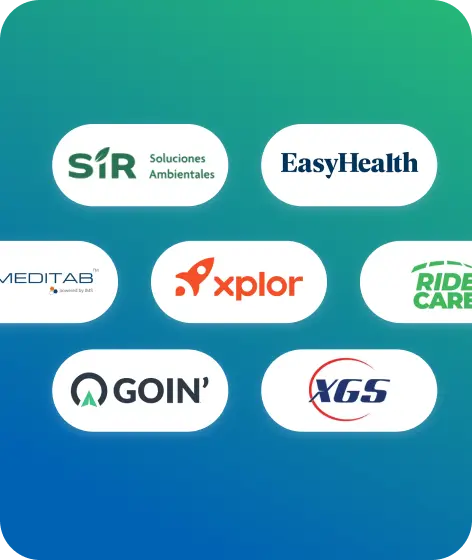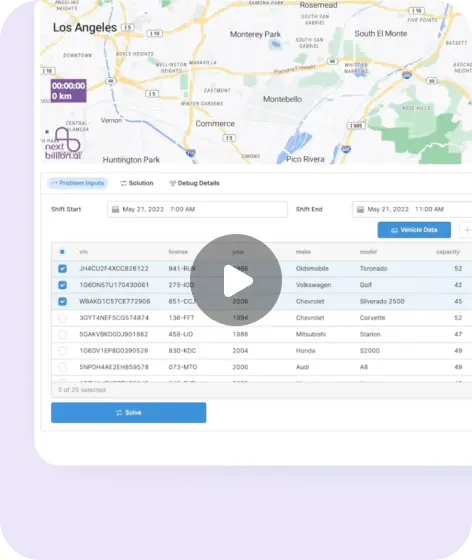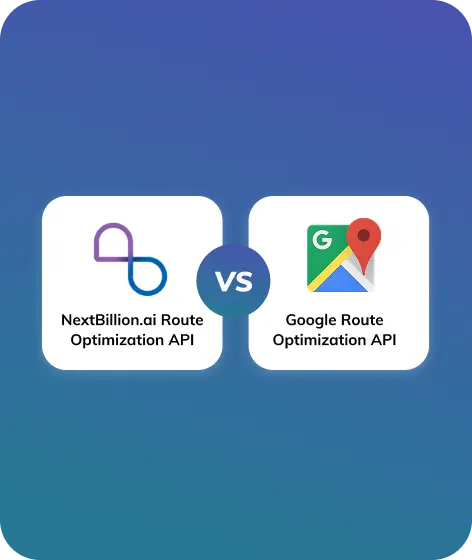
Table of Contents
Ambulance Dispatch Routes for Emergency Care are essential to ensure that ambulances can navigate the quickest and safest route to reach the medical care center. Emergency cases require urgent medical care, and around 33% of patients in road case accidents lose their lives to the late arrival of ambulance and hospital due to traffic jams.
The first hour of an emergency services is the critical hour when a patient needs the necessary medical care to save the patient’s life. With the growing network of roads and traffic instances, it becomes difficult for ambulance drivers to get real-time data about road conditions. If the dispatcher knows which is the shortest route to the nearest hospital/to the patient while considering the real-time traffic conditions, it will become easier to direct the drivers to reach the destination and handle the case.
This is possible when the ambulance fleet is equipped with a robust Ambulance Dispatch route system for Emergency Care. The advanced system is powered by technologies like GPS navigation, AI-powered route optimization, geofencing, and dynamic planning, which help dispatchers select the fastest and safest route to reduce response time.
Understanding the Challenges Faced by Emergency Centers
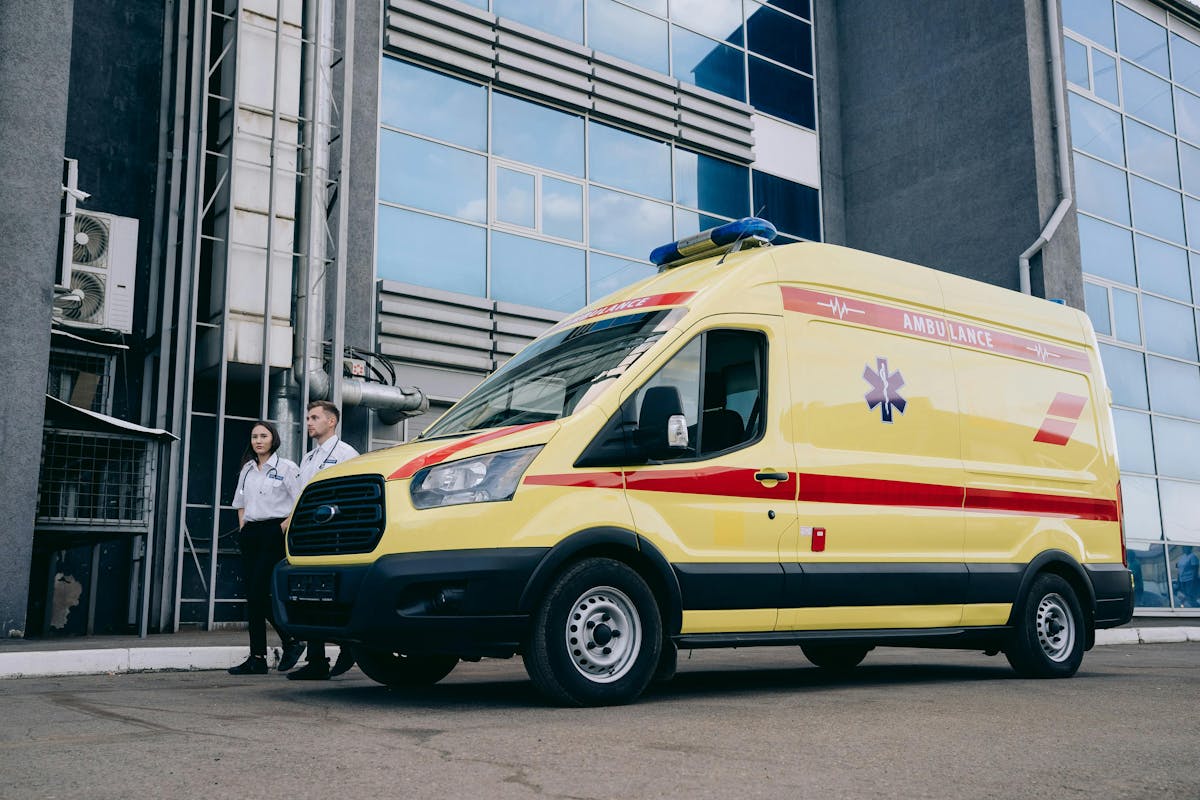
Emergency response centers play a crucial role in ensuring timely medical assistance during critical situations, such as medical emergencies, fires, and natural disasters. Factors such as traffic congestion, unpredictable road conditions, data accuracy issues, and coordination with multiple agencies contribute to delays that can be a matter of life and death.
Let’s understand the challenges that Emergency Centers face on a daily basis that lead to reduced response times and survival rates:
- Traffic Congestion: Emergency vehicles often struggle with heavy traffic, particularly in urban areas. It causes delays in reaching critical locations, whether in the hospital or the emergency location. While sirens and lights help clear paths, unpredictable congestion can still affect response times. In emergency situations, every minute matters.
- Dynamic Route Changes: Real-time obstacles such as roadblocks or sudden weather changes require emergency centers to update and optimize routes continuously. Delayed information updates can negatively impact efficiency.
- Data Accuracy and Integration: Emergency centers rely on GPS, GIS mapping, and traffic data, but discrepancies or outdated information can lead to suboptimal routing. Seamless integration between multiple data sources to get accurate information is still a challenge.
- Rural and Remote Area Accessibility: Road infrastructure may be inadequate, and network connectivity can be weak in remote regions. It makes it difficult to receive real-time data and optimize routes effectively.
- Limited Predictive Analytics: While AI and machine learning help predict traffic patterns, many emergency centers lack advanced predictive tools, making it difficult to anticipate delays and proactively adjust routes.
- Limited Visibility: Limited visibility about the ambulance and available team leads to unnecessary delays. If the dispatchers know the nearest available team to the incident site, they can ensure that the nearest team reaches the spot instead of the farther one.
Besides, the emergency departments may lack instant notifications when a unit reaches or leaves a critical area, causing coordination issues and slower response times.
The Role of Geofencing in Emergency Dispatch
Geofencing is a location-based technology that creates virtual boundaries around specific geographic areas. When a device or vehicle enters or exits these predefined zones, automated actions, such as alerts or routing changes, are triggered. This technology is widely used in emergency services to improve situational awareness and ensure that responders can reach affected areas as quickly as possible.
Here’s how geofencing helps the emergency responders:
Real-Time Location Tracking for Faster Response
Geofencing allows emergency dispatchers to track the real-time location of response units. This ensures that the nearest available unit can be deployed to the emergency site, reducing delays caused by outdated or manual tracking methods. By integrating GPS and IoT-enabled devices, dispatch centres gain a comprehensive view of response unit locations and movement patterns.
Automating Alerts and Emergency Zone Management
With geofencing, emergency services can automate alerts for first responders, hospitals, and other critical stakeholders when an incident occurs within a defined zone. This automation reduces response time by eliminating manual communication delays. Additionally, geofencing helps manage high-risk zones by automatically rerouting emergency vehicles to avoid hazards or congested areas.
For instance, NextBillion.ai’s Geofencing API helps with effective resource and asset utilization. The responders can assign the nearest hospitals to the emergency responders in real-time with the help of isochrones and isodistances. It helps in calculating the proximity based on time or distance.
It helps monitor the ambulance’s movement and enables notifications and alerts to the hospital team based on the proximity. This helps reduce the waiting times and helps the hospital team to prepare in advance by arranging necessary medical equipment, mobilizing specialized staff, and ensuring a seamless patient handover.
How Dynamic Planning Boosts Response Rates to Emergency Cases?

Dynamic planning ensures that emergency response teams can adapt in real-time to changing conditions, such as traffic congestion or unexpected roadblocks. For instance, the NEMT (non-emergency medical transportation) usually deals with non-emergency issues, but the industry deals with time-sensitive scenarios. Appointment rescheduling and vehicle breakdown are some cases that can mimic emergency situations that require a fast response to allocate resources.
This is where dynamic planning comes into play. It helps in enabling automated route adjustments based on congestion, road closures, or weather disruptions. Vehicles received updated directions instantly, ensuring they always took the fastest possible route.
In emergency centers, AI-driven insights and real-time data help the dispatch centres refine routing and unit allocation strategies to enhance efficiency continuously. Here’s how:
AI-Driven Route Optimization
Artificial Intelligence (AI) plays a crucial role in optimizing emergency response routes. AI-powered algorithms analyze traffic patterns, weather conditions, and historical response data to determine the fastest and safest routes. This proactive approach minimizes travel time and maximizes the chances of successful intervention. NextBillion.ai’s route optimization API considers 50+ constraints to dynamically re-route considering the real-time road conditions.
Dynamic Unit Allocation Based on Proximity
Instead of relying on fixed station-based dispatching, dynamic planning enables response units to be allocated based on their real-time proximity to the emergency location. This method ensures that the closest unit is dispatched, reducing response time and optimizing resource utilization.
Continuous Monitoring and Route Adjustments
Geofencing and AI-based systems continuously monitor routes and adjust them dynamically based on new traffic conditions or obstructions. If a faster route becomes available or an existing path is blocked, the system automatically recalibrates, ensuring responders always take the most efficient path.
Case Study: How a Healthcare Emergency Department Improved Their Response Time?
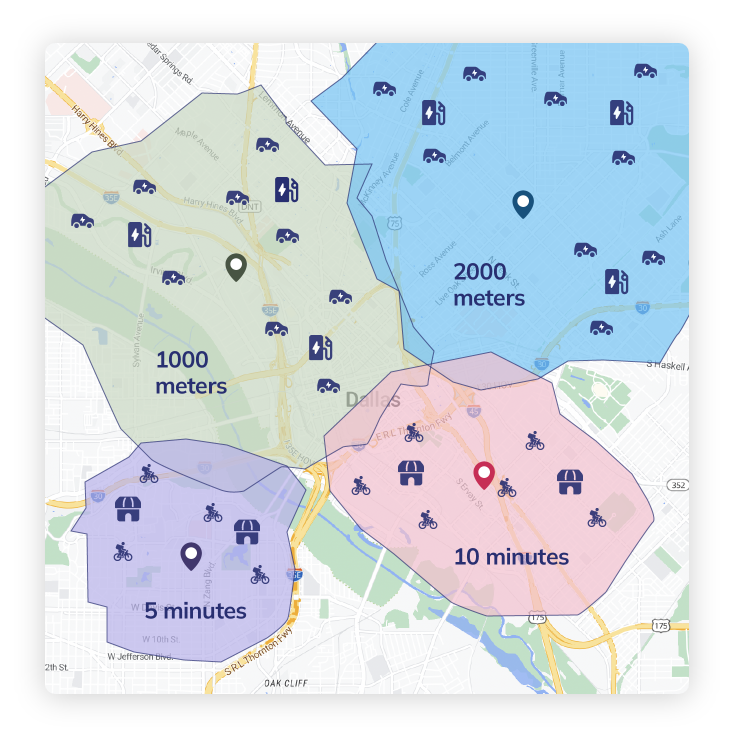
With increasing urbanization, traditional route planning methods often fail to deliver optimal results. This is one of the issues that an emergency center faces, and it leads to operational inefficiency. The unpredictable road conditions and inefficient route planning impacted the emergency department admissions.
Problems Faced
Here are some of the factors that impacted the response time, patient care, and operational efficiency:
- Time Sensitivity: The primary goal was to reach the incident site at the earliest. In emergency response, the golden hour is the first 60 minutes following a traumatic injury or accident, during which immediate medical intervention is necessary to improve the patient’s chances of survival and recovery.
- Location and Accessibility: Due lack of real-time traffic data and real-time instances, like restricted access or blocked roads, caused the ambulances to take an unplanned detour. It increased the response time and lost precious minutes in manually planning the next best route to reach the nearest hospital.
- Hospital and Facility Unavailability: Some emergency cases need to be referred to specialized medical centers, like stroke units or trauma centers. However, with limited real-time visibility, it is difficult to get an idea of which nearest hospital can assist the patient. If the chosen hospital is at full capacity, the ambulances have to reroute.
- Planning the Routes as per the Severity: Different emergency medical cases require different care and the hospital. For instance, an accident with a severe head injury might require a hospital that has easily accessible CT scans and MRI machines, so the doctors can assess the injuries appropriately and proceed with treatment. Some cases may even need ventilators, advanced cardiac care, and neonatal incubators.
- Real-time Alert: Due to the absence of real-time notifications, the nearest hospitals wouldn’t know about the arrival of emergency cases. This increases the time for the facility to complete basic procedures and prepare the necessary equipment to help the patient. They had to arrange the facilities and complete the necessary procedures on the spot as the ambulance arrived at the hospital, increasing the response time.
Organization’s Expectations
Here’s what the organization wanted to accomplish with integration:
- Accurate estimated time of arrival of the ambulances to the hospitals amidst the traffic conditions
- Real-time visibility over ambulances and responder teams, so if any team is closest to the incident site, they can attend it directly.
- Optimized routes for the ambulance drivers to reach the incident site and hospital on time safely. The allocation of the ambulance should be done with the necessary equipment to handle severe cases.
- Turn-by-turn navigation to easily reach the locations, with reliable offline functionality in cases with poor Internet access.
How NextBillion.ai’s Suite of Geofencing and Dynamic Planning Helped?
The organization partnered with NextBillion.ai’s MapFusion API and SDKs to create a customized dynamic planning solution that helped them overcome the challenges. Here’s how:
- Route Optimization API: The organization integrated route optimization API which helped in dispatching routes after considering 50+ real-time constraints. The API accounted for historical traffic data, real-time conditions, and other constraints, like vehicle type, road restrictions, and hospital proximity.
- Real-Time Tracking API and SDK: MapFusion’s real-time tracking API and SDK was implemented to provide accurate, live location updates of emergency vehicles, ensuring seamless coordination between dispatch centers, hospitals, and responders.
- Snap-to-Road API: Snap to Road API was integrated to correct the inaccuracies in the GPS data by aligning the drivers to the nearest road.
- Navigation SDK: Navigation SDK provided ambulance drivers with precise turn-by-turn navigation that helped them reach the incident site and hospital easily. It had offline functionalities, so even in areas with poor internet connectivity, the drivers were able to navigate easily.
- Dynamic Relocation: The new cases were dynamically assigned based on the emergency responder teams’ location and availability. With the backend trip control, the trip restarts without the driver’s intervention.
- Geofencing API: Geofencing was implemented around each vehicle’s location and monitoring systems were used to trigger the entry and exit alerts. It helped streamline operational efficiency.
Outcome
The organization witnessed a 30% reduction in emergency response times. Automated routing adjustments and proximity-based unit allocation improved the efficiency of resource deployment. The system also enhanced coordination between emergency responders, hospitals, and law enforcement agencies, leading to better outcomes for patients.
Key Technologies Powering Geofencing and Dynamic Planning
The effectiveness of geofencing and dynamic planning depends on several advanced technologies that enable precise location tracking, intelligent decision-making, and seamless communication.
GPS and IoT for Precise Location Tracking

Global Positioning System (GPS) technology, combined with Internet of Things (IoT) devices, enables precise real-time tracking of emergency response units. IoT sensors installed in vehicles provide continuous updates on location, speed, and route conditions, allowing dispatchers to make informed decisions.
AI and Predictive Analytics for Smarter Dispatching

AI-powered predictive analytics analyze historical data and real-time inputs to optimize emergency response strategies. These insights help anticipate demand, suggest alternative routes, and identify potential delays before they impact response times.
Cloud-Based Systems for Real-Time Coordination
Cloud-based platforms enable seamless communication and data sharing among emergency response teams. These systems allow multiple agencies to access real-time updates, ensuring coordinated efforts in large-scale emergencies.
Best Practices for Implementing Geofencing in Emergency Services
To maximize the benefits of geofencing in emergency dispatch, organizations should follow best practices that enhance accuracy, reliability, and efficiency.
1. Setting Accurate Geofencing Boundaries
Defining precise geofencing boundaries ensures that automated alerts and response triggers activate only when necessary. This prevents false alarms and ensures that emergency resources are deployed effectively.
2. Integrating Live Data for Smarter Decision-Making
By integrating live traffic, weather, and incident reports, emergency dispatch centers can make informed decisions in real time. Live data integration enhances situational awareness and improves response planning.
3. Ensuring System Reliability and Redundancy
Emergency systems must be designed with fail-safes and redundancy measures to ensure continuous operation during critical situations. Backup servers, alternative communication channels, and robust cybersecurity protocols help maintain system reliability.
The Bottom Line
Dynamic route planning is essential for an industry that deals with uncertainties. Unpredictable cases often surround the emergency medical teams, and a robust route planning and geofencing system is required for operational efficiency. The dynamic route planning system helps with faster, more flexible, and highly efficient delivery routes that help the team to reach the emergency incident site and hospital at the earliest.
MapFusion includes a set of suitable APIs and SDKs, making it a one-stop solution for routing, navigation, and tracking. It can easily integrate map data from multiple sources and customize the routes as per the fleet’s needs. The platform is designed for scalability, such that it easily handles massive datasets and API calls, whether managing a city-wide network or nationwide. Connect with NextBillion.ai experts to get more information about MapFusion and how it can be setup.
About Author
Bhavisha Bhatia
Bhavisha Bhatia is a Computer Science graduate with a passion for writing technical blogs that make complex technical concepts engaging and easy to understand. She is intrigued by the technological developments shaping the course of the world and the beautiful nature around us.

